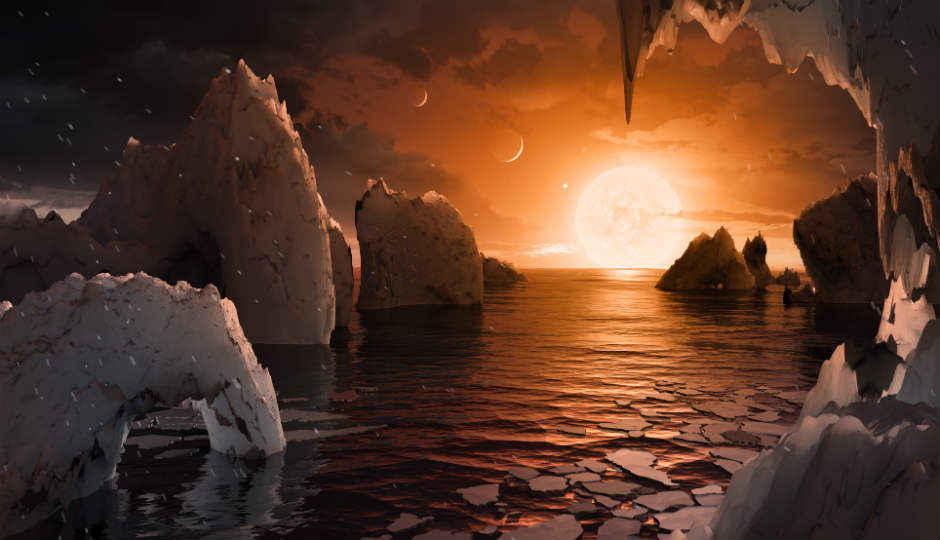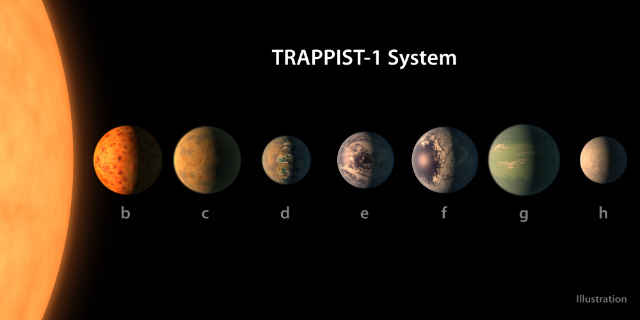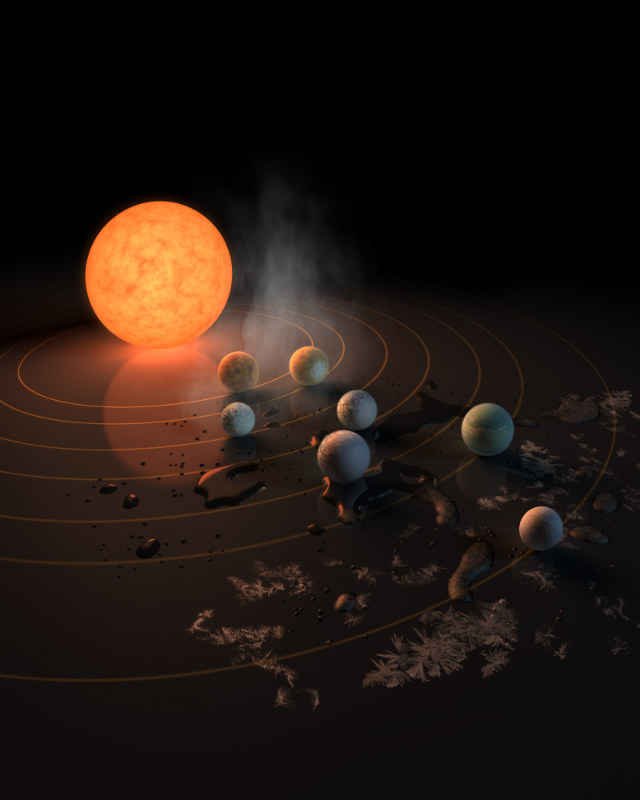New Earth-sized planets discovered orbiting a tiny star in habitable zone

Finding a second Earth is not a matter of 'if', but of 'when': Thomas Zurbuchen, NASA
In what is possibly the most exciting extraterrestrial discovery of recent times, the Spitzer Space Telescope has spotted a cluster of Earth-sized planets traversing a tiny star, a mere 40 light years away from our solar system. Of the seven planets orbiting the TRAPPIST-1 dwarf star, three of the planets fall in the ‘habitable zone’ – an optimum distance from the nearest star in terms of heat and other possible atmospheric conditions, where a rocky planet is most likely to contain water.
While we have made multiple planet sightings and solar system discoveries, the discovery of TRAPPIST-1 exoplanet system is particularly significant in our ever-expanding quest for life outside of Earth. This is the first time that such a large number of Earth-like planets have been spotted in any solar system, and even more, so many lie in a region that may be favourable towards supporting life as we know it. As Thomas Zurbuchen, Associate Administrator at NASA’s Science Mission Directorate puts it, “Answering the question ‘are we alone’ is a top science priority and finding so many planets like these for the first time in the habitable zone is a remarkable step forward toward that goal.”
Named after the Transiting Planets and Planetesimals Small Telescope (TRAPPIST) operated by Belgium and based in Chile, the solar system is at a relatively close distance of 40 light years (235 trillion miles) to us and lies in the Aquarius constellation. Three of the seven planets in this solar system were first spotted by TRAPPIST in May last year, following which multiple telescopes and observatories joined the hunt, and the result has finally been confirmed.
NASA’s Spitzer data has relayed sizes of each of these exoplanets, allowed first estimates of masses of the first six planets. All of the planets are being said to be rocky, with practical possibilities of them containing liquid water in abundance. The planets are also strikingly close to each other, and if you could observe the night sky from one of the central planets, you would spot a few of the other ones up on the sky. While it already sounds mesmerising, scientists may have a thing or two to discover about how these planets’ forces interact with each other.
Michael Gillion, lead author of this paper published in Nature journal, stated, “(it is) the best target yet for studying the atmospheres of potentially habitable, Earth-size worlds.” The tiny star TRAPPIST-1 has also been classified as an “ultra-cool” dwarf star, and as if to make up for the composition of heat, all of the seven planets are closer to their star than Mercury’s distance from the Sun.
While all of this would lead to a very different night sky, it may also lead to locked tidal forces that would mean permanent day and night on either halves of each of these planets, which in turn may generate fierce winds and tides detrimental to the sustenance of life. Further investigations and observations are already on the way for this exciting new discovery. The Hubble Space Telescope is presently screening four of the planets, including the three in the habitable zone, for examining their atmosphere.
It is certainly not until the next two years that we would be privy to more detailed information about TRAPPIST-1, but the enigma of spotting planets that resemble ours, at least upon first sight, cannot be left behind. Life, as has often been speculated, may just be found in the unlikeliest of places. This one, at least, seems likely.







